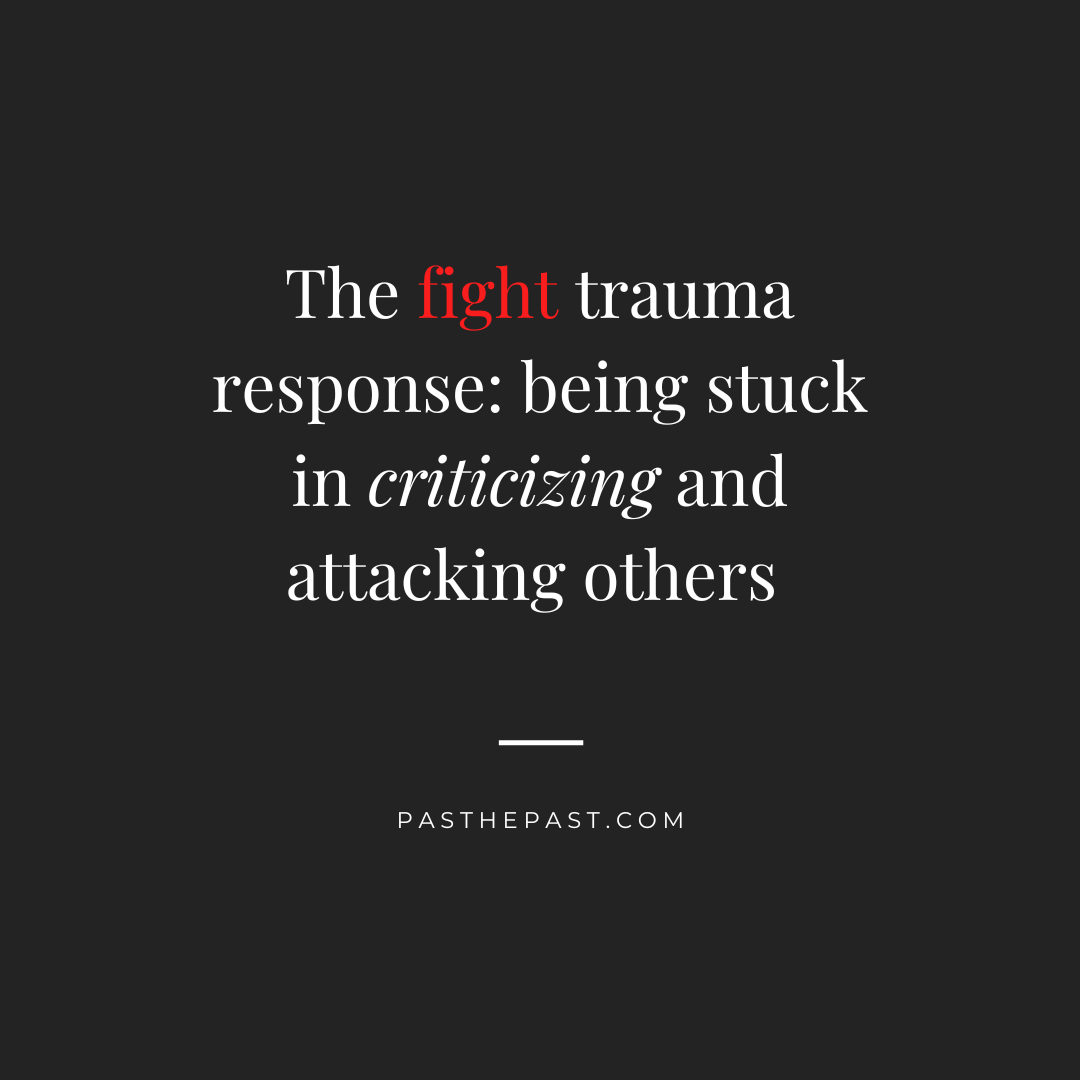The fight trauma response is rarely observed in moments of introspection. It takes an honest and brave person to notice themselves fiercely attacking others with bad jokes, sarcasm, insults, or even outright violence.
But what exactly is this response, and how does it impact relationships?
What is the Fight Trauma Response?
The fight response is a survival mechanism triggered when someone feels threatened. Instead of fleeing, freezing, or fawning, the individual lashes out, seeking to dominate or control the situation.
During this state, the person loses access to their positive emotions, empathy, and vulnerability. These vital elements of connection disappear, making genuine interaction with others temporarily impossible.
This loss of connection allows the individual to attack without remorse. They feel entitled to say hurtful things—remarks about how their partner’s job is “going nowhere,” how “bad” they are as a partner, or how “unhappy” they make them.
In these moments, they no longer see their partner as the loving individual they usually are. They can’t even see themselves clearly. Their emotions and usual capacity for connection are blocked.
How the Fight Response Impacts Relationships
The impact on relationships can be devastating. When the person in a fight response feels they have regained control—often by dominating or belittling their partner—they calm down. They regain access to their positive emotions and empathy.
However, this comes at a cost. Their partner is left hurt, confused, and often wondering what triggered the attack. This dynamic creates a cycle that repeats whenever the individual feels threatened, leaving lasting emotional scars on both sides.
What Triggers the Fight Response?
A wide range of triggers can activate the fight response, from feelings of envy to unexpected sources like intimacy itself.
In certain attachment styles—patterns of behavior shaped by early caregiving experiences—intimacy is perceived as a threat. Instead of welcoming closeness, the individual attacks the very person who offers them safety.
This dynamic, while painful, makes sense when viewed through the lens of trauma. The fight response often stems from a deep-seated loss of faith in others, a defense mechanism to avoid ever feeling weak or humiliated again.
Understanding the Pain Behind the Fight Response
At its core, the fight response is a shield against vulnerability. It arises from immense pain and the fear of being hurt again. The individual attacks others to avoid experiencing the helplessness they once felt, but in doing so, they create distance in their relationships.
This behavior is not an excuse for their actions, nor should it be rationalized by those on the receiving end. Enabling the behavior by accepting it without consequences only perpetuates the cycle.
For those who recognize themselves in this response, it’s essential not to feel ashamed. Acknowledging the pain and the burden it carries is the first step toward healing.
Healing the Fight Response
Breaking free from the fight response is a long and challenging process, but the rewards are profound. Imagine a life where you no longer feel constantly stressed or paranoid. A life where you feel safe with your partner, knowing they love you deeply and it’s safe to love them back.
Picture yourself opening up, sharing your vulnerabilities, and trusting that you are no longer walking alone. You no longer fear the person holding your hand but see them as a true partner in life.
Moving Forward
Whether you’re on the receiving end of the fight response or the one struggling with it, healing is possible. Understanding the roots of this behavior is a powerful first step, but transformation requires effort, support, and guidance.
If you’re ready to start this journey, check out my program, Secure Foundations. Through psychoeducation, group coaching, and individual coaching, we’ll work together to help you break free from these patterns and create relationships built on trust, safety, and connection.
Transformation is within reach, and peace is waiting on the other side.
